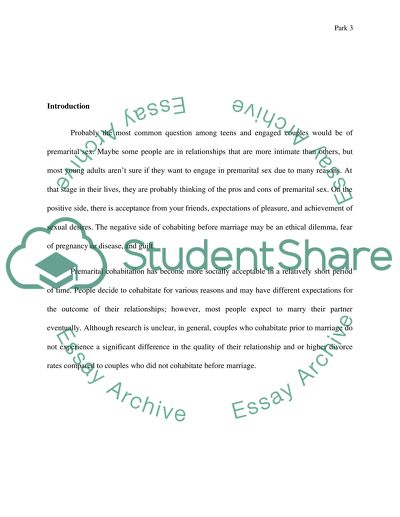Cite this document
(“The effects of cohabitating before marriage Essay”, n.d.)
Retrieved from https://studentshare.org/psychology/1403145-the-effect-of-cohabitating-before-marriage
Retrieved from https://studentshare.org/psychology/1403145-the-effect-of-cohabitating-before-marriage
(The Effects of Cohabitating before Marriage Essay)
https://studentshare.org/psychology/1403145-the-effect-of-cohabitating-before-marriage.
https://studentshare.org/psychology/1403145-the-effect-of-cohabitating-before-marriage.
“The Effects of Cohabitating before Marriage Essay”, n.d. https://studentshare.org/psychology/1403145-the-effect-of-cohabitating-before-marriage.


